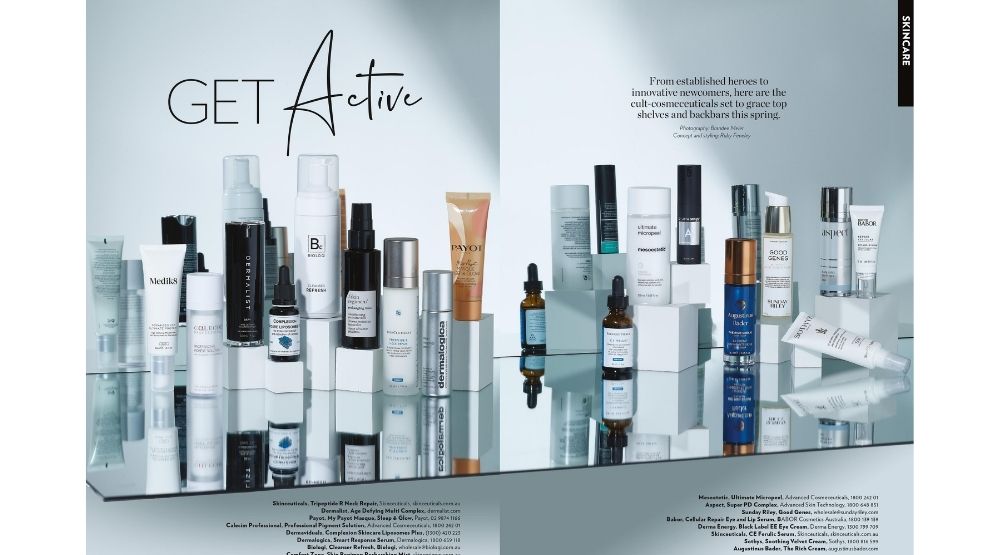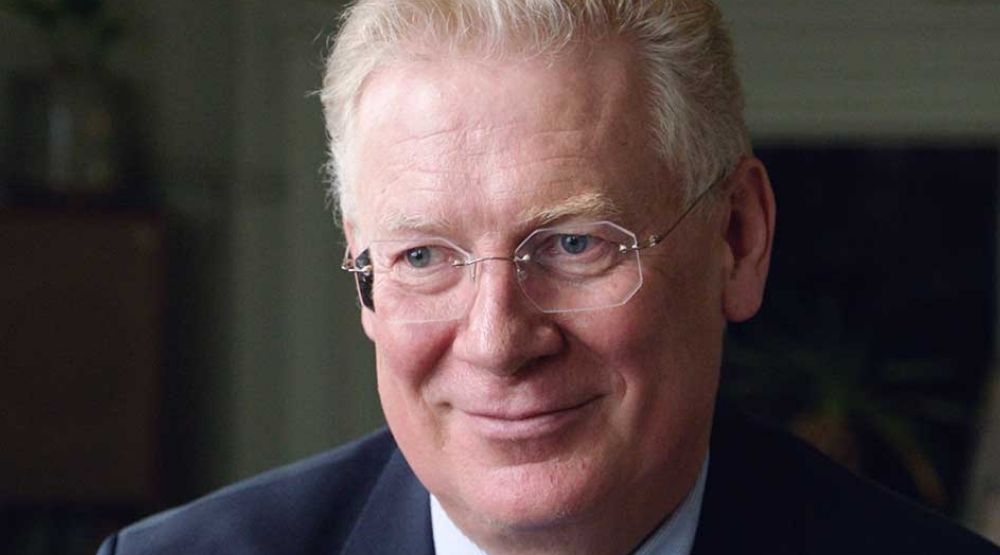Augustinus Bader was 2021’s biggest skincare story. Founded in 2018 with two SKUs: The Cream and The Rich Cream, the brand has achieved cult status to rival heritage brands like La Mer, Biologique Recherche and Sisley. It has instantly resonated with the most influential figures in beauty and fashion. Indeed, Augustinus Bader has become so synonymous with luxury that the Rich Cream made an appearance in HBO’s Succession, the single product on troubled and status-obsessed Kendall Roy’s top-shelf (the Bader social media team have had fun with this on Instagram).
In 2021 they have launched into supplements, haircare and cleansers – and solidified their special tie to the Australian professional beauty industry with the appointment of Sydney based Melanie Grant as their Global Advisor.
Professor Bader and Charles Rosier are an unlikely pairing. Professor Bader is a German biomedical scientist and physician and one of the world’s foremost experts in stem cell research. Charles Rosier is a French financier. When the two met at a dinner party, Professor Bader had created a groundbreaking wound healing gel, that rehabilitated the skin of burns victims without the need for grafts. Charles Rosier saw an opportunity and two years later the first prototype of the cream was made. In 2018 the brand made $7 million dollars in profits, in 2020 the figure was $70million.

We spoke with Founder Professor Bader and CEO Charles Rosier about their phenomenal success story.
1. You’re something of an outsider in the industry coming from a science and medical background rather than a beauty background; how do you think your distance from the beauty industry helped you create a product that has become instantly iconic?
Professor Bader: Medicine means understanding how to care for someones’ health. With Augustinus Bader we have applied scientific knowledge, based on functionality and the skin’s medical needs, rather than taking a one-dimensional, purely commercial approach. These medical beliefs are the backbone of our product and philosophy – we focus on developing formulas that respect human skin physiology with the primary goal of achieving better and sustained skin health.
2. Can you explain the science behind the Augustinus Bader formulations?
Professor Bader: Through my research, I found that the body’s stem cells are made usable through three essential components called A, B & C. In younger individuals or the case of a minor injury, these effects come together like pieces of a puzzle. I have nicknamed these components “activation, boosting, commitment.”
The reason for the development of the creams was the knowledge that as we get older or have severe injuries, these A-B-C repair mechanisms, unfortunately, either decrease or stop functioning. If we stop repairing ourselves or cannot carry out this repair in an optimal manner, the result is an accelerated ageing process. Thanks to this understanding, I have succeeded in putting together a kind of “toolbox” of nutritional components in my care line, the idea of which no longer makes us dependent on actual age. In this way, it is increasingly possible to achieve improved protection and specific skincare by optimizing the body’s own repair processes so that everyone can achieve the best and healthiest skin for themselves.
The body’s own stem cells’ activation happens every day by itself and is entirely independent of the products – we have to fix ourselves every day because we are not made of stone but living organisms. We developed the products based on my understanding of the body’s own protection and care needs for our stem cells, which are our skin’s only repair specialists, working every day to keep it healthy.

3. The rich cream has been embraced by makeup artists as well as aestheticians and beauty therapists. Which group has been most influential in the growth of the brand and why do you think the product and has resonated so widely?
Charles Rosier: The accumulation of word-of-mouth [endorsements] from others in the industry is what helped us succeed. The brand’s most powerful word of mouth came by way of beauty editors and reporters. Augustinus’ story resonated with the journalist community, and they tried the product and shared their positive experience with their readers. Their ability to story-tell is powerful — they can outline how and why a product works, which is very hard to do with one post on Instagram. The efficacy of the products that created Word of Mouth and Journalists testimonials were the main pillars of our success.
Professor Bader: I’m not from the beauty industry; I’m just a medical doctor and a research scientist, so my approach to creating skincare has been more focused on skin health and personalized medicine than a traditional beauty developer. I think we succeeded in creating formulations that genuinely work. They work because we respect the physiology of human skin with a knowledge base that originated from my research.
4. How do Augustinus Bader products work synergistically with intensive in-salon treatments like bipolar radiofrequency facials?
Professor Bader: Every trigger coming from the outside (or the inside) such as (but not limited to) Radiofrequency, Micro-Needling, Bipolar RF, Ultrasound, Light Therapy, and manual massage techniques such as Gua Sha stimulates tissue and promotes the benefits of TFC8®.
5. What do you think is the next frontier of innovation for the skincare industry?
Charles Rosier: The consumer is looking for clean formulas, i.e., nothing toxic or harmful in the medium- or long term, combined with efficacy. Biotech research can be a source of ideas and development.
There are a lot of limitations in cosmetics regulations that restrict the nature and activity of ingredients. It will be interesting to see how cosmetics regulations evolve. Maybe you will have more natural bridges between the two worlds, but otherwise, the progress made in biotech might not be able to be made in cosmetics. But we live in a world where things move so fast – for sure, we will see more and more bridges.
Read the current issue of our digital magazine here:
- For more news and updates, subscribe to our weekly newsletter
- Follow us on Instagram
- Like us on Facebook
- Join Australia’s largest network of beauty industry professionals on LinkedIn
- Subscribe to our print magazine
Have an idea for a story or want to see a topic covered on our site and in our pages? Get in touch at info@professionalbeauty.com.au.

